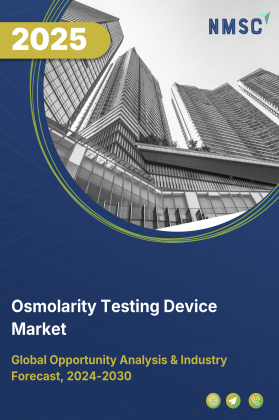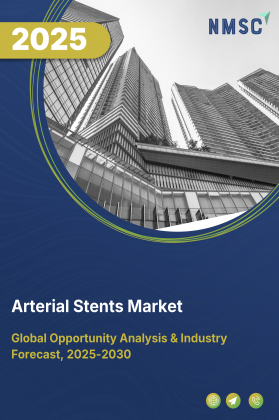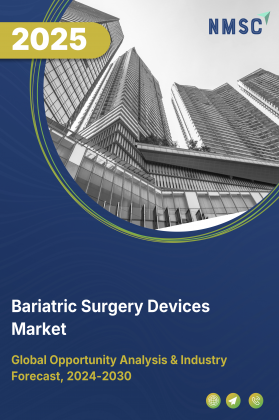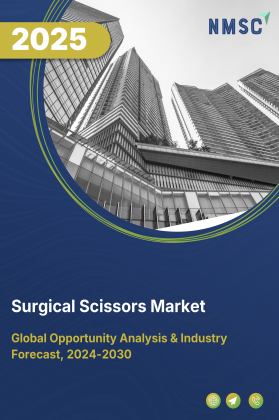
Osmolarity Testing Device Market by Device Type (Portable Osmometers, Benchtop Osmometers, Automatic Osmometers), by Technology (Freezing Point Depression Osmometry, Vapor Pressure Osmometry, Membrane Osmometry, Impedance-Based Osmometry), by Sample Capacity (Single-Sample Osmometers, Multi-Sample Osmometers), and by End User (Hospitals, Diagnostic & Laboratory Centers, Biopharma Manufacturers, Research Institutes) – Global Opportunity Analysis and Industry Forecast – 2025–2030
Industry Outlook
The global Osmolarity Testing Device Market size was valued at USD 1.73 billion in 2024, with an estimation of USD 1.88 billion in 2025 and is predicted to reach USD 2.83 billion by 2030 with a CAGR of 8.6% from 2025-2030.
The market is experiencing strong growth driven by rising demand for early and accurate diagnosis of eye-related conditions. Increasing prevalence of chronic diseases, such as diabetes and autoimmune disorders, has heightened the need for precise tear film osmolarity measurements to manage complications like dry eye disease.
An aging global population further fuels demand, as age-related ocular surface disorders become more common. Additionally, growing healthcare investments and expanding diagnostic infrastructure are enabling the adoption of advanced osmolarity testing devices, supporting improved patient outcomes and broadening the osmolarity testing device market penetration worldwide.
Rising Incidence of Chronic Diseases Driving Market Growth
The increasing prevalence of chronic diseases is a major factor fueling the osmolarity testing device market growth. Conditions such as diabetes and autoimmune disorders significantly raise the risk of eye-related complications, including dry eye disease, making osmolarity testing essential for early detection and monitoring. These devices enable healthcare providers to offer timely care and improve patient outcomes through accurate measurement of tear film osmolarity.
According to the International Diabetes Atlas, the number of people living with diabetes was 5.36 million in 2021 and is projected to reach 7.83 million by 2045, marking a 46.1% increase over 24 years. The sharp rise in diabetes cases underscores the critical role of advanced diagnostic tools, driving demand for osmolarity testing devices worldwide.
Growing Aging Population Contributing to Market Expansion
The global aging population further accelerates the need for osmolarity testing devices as age-related eye conditions become increasingly common. Elderly individuals face higher risks of ocular surface disorders and dry eye disease, requiring regular and precise diagnostic assessments for effective management.
The World Population Prospects 2022 report highlights that individuals aged 65 years and above accounted for 10% of the world’s population in 2022, with this figure expected to reach 16% by 2050. This demographic trend is anticipated to generate substantial demand for advanced eye care solutions, including osmolarity testing devices, over the coming decades.
Rising Healthcare Expenditure Enabling Technological Adoption
Growing global healthcare expenditure is another key driver fostering the adoption of advanced osmolarity testing devices. Increased investment in diagnostic infrastructure and innovative medical technologies allows healthcare providers to integrate sophisticated tools for early and accurate detection of eye-related conditions.
Data from the Centers for Medicare & Medicaid Services indicates that U.S. national health spending grew by 8.2% in 2024 and is projected to rise by 7.1% in 2025, reflecting continuous commitment to improving patient care. This financial growth supports the development and procurement of modern osmolarity testing devices, contributing significantly to market expansion.
High Cost Limiting Market Growth
The high cost of advanced osmolarity testing devices, especially those using freezing point depression technology, remains a major challenge. Small clinics and laboratories face budget limitations, making it difficult to adopt these devices. This restricts accessibility in many regions and slows down the growth of the market.
Integration of Osmolarity Testing with Digital Health and Telemedicine
The integration of osmolarity testing devices with digital health platforms and telemedicine solutions is expected to create ample growth opportunities for the osmolarity testing device market demand in the future. This advancement will enable healthcare providers to track patient conditions in real-time and make timely treatment decisions. It will also enhance patient engagement, improve diagnostic accuracy, and expand access to osmolarity testing, particularly in remote or underserved areas.
Market Segmentations and Scope of the Study
The osmolarity testing device market report is segmented on the basis of device type, technology, sample capacity, end-user, and region. On the basis of device type, the market is segmented into portable osmometers, benchtop osmometers, and automatic osmometers. On the basis of technology, the market is categorized into freezing point depression osmometry, vapor pressure osmometry, membrane osmometry, and impedance-based osmometry. On the basis of sample capacity, the market is classified into single-sample osmometers and multi-sample osmometers. On the basis of end-user, the market is divided into hospitals, diagnostic & laboratory centers, biopharma manufacturers, and research institutes. Regional breakdown and analysis of each of the aforesaid segments includes regions comprising of North America, Europe, Asia-Pacific, and RoW.
Geographical Analysis
North America currently dominates the osmolarity testing device market share and is projected to maintain its leadership throughout the forecast period. This dominance is largely driven by rising healthcare spending in the region, which fuels demand for advanced diagnostic tools.
Increased financial resources allocated to healthcare enable greater investment in innovative technologies, improving patient care, accessibility, and diagnostic accuracy. The adoption of modern osmolarity testing devices helps healthcare providers manage eye-related conditions more effectively, supporting the region’s strong market growth.
Asia-Pacific is expected to be the fastest-growing region in the osmolarity testing device industry, driven by its aging population in countries such as China and India. Older individuals require more frequent monitoring of osmolarity levels to manage age-related health conditions, including diabetes, dehydration, and dry eye disease, contributing to rising demand for these devices.
Additionally, the prevalence of diabetes in the region is increasing the need for accurate diagnostic tools. According to the International Diabetes Federation, diabetes patients in China numbered 141 thousand in 2021 and are projected to reach 174 thousand by 2045, representing a 23.4% growth over 24 years. This growing patient base supports expansion of the market in the region.
In Europe, eye health conditions such as glaucoma significantly influence the osmolarity testing device market expansion. Glaucoma is a group of eye diseases that damage the optic nerve, due to high intraocular pressure, and lead to irreversible vision loss if untreated. It is called the “silent thief of sight” because symptoms develop slowly and go unnoticed until the disease progresses. In 2024, the total number of Europeans aged 40 years and older with glaucoma was estimated at 12.26 million out of a population of 405.36 million. This highlights the critical need for early detection and monitoring, which osmolarity testing devices support by providing accurate assessment of tear film and ocular surface health.
The Rest of the World (RoW), including Latin America, the Middle East, and Africa, presents emerging opportunities for the market. Rising awareness about eye health, increasing prevalence of chronic diseases such as diabetes, and growing investment in healthcare infrastructure are driving demand for advanced diagnostic tools. Countries like Brazil, Mexico, South Africa, and the UAE are improving access to modern eye care facilities, which includes the adoption of osmolarity testing devices.
Although healthcare infrastructure in several parts of Africa and the Middle East remains underdeveloped, government initiatives, international aid, and telemedicine adoption are helping bridge the gap. These developments are expected to expand market reach, improve early detection of eye conditions, and create growth potential in these regions over the coming years.
Strategic Innovations Adopted by Key Players in the Osmolarity Testing Device Industry
I-MED Pharma and Trukera Medical are advancing tear osmolarity testing, helping expand adoption in ophthalmology and optometry clinics for dry eye disease management. Advanced Instruments, ELITech, Knauer, and Loser Messtechnik strengthen laboratory-based diagnostics with high-precision osmometers, supporting hospitals, research institutes, and biopharma manufacturers.
CLEIO contributes by enhancing device usability and manufacturability, while MX3 Diagnostics, Labtron, and 4Es-USA focus on portable solutions that improve accessibility at point-of-care settings. Collectively, these initiatives enhance diagnostic accuracy, broaden clinical and research applications, and accelerate global market penetration of osmolarity testing devices.
Key Benefits
-
The report provides quantitative analysis and estimations of the industry from 2025 to 2030, which assists in identifying the prevailing market opportunities.
-
The study comprises a deep-dive analysis of the current and future osmolarity testing device market trends to depict prevalent investment pockets in the sector.
-
Information related to key drivers, restraints, and opportunities and their impact on the market is provided in the report.
-
Competitive analysis of the key players, along with their market share is provided in the report.
-
SWOT analysis and Porters Five Forces model is elaborated in the study.
-
Value chain analysis in the market study provides a clear picture of roles of stakeholders.
Osmolarity Testing Device Market Key Segments
By Device Type
-
Portable Osmometers
-
Benchtop Osmometers
-
Automatic Osmometers
By Technology
-
Freezing Point Depression Osmometry
-
Vapor Pressure Osmometry
-
Membrane Osmometry
-
Impedance-Based Osmometry
By Sample Capacity
-
Single-Sample Osmometers
-
Multi-Sample Osmometers
By End User
-
Hospitals
-
Diagnostic & Laboratory Centers
-
Biopharma Manufacturers
-
Research Institutes
By Region
-
North America
-
The U.S.
-
Canada
-
Mexico
-
-
Europe
-
The UK
-
Germany
-
France
-
Italy
-
Spain
-
Denmark
-
Netherlands
-
Finland
-
Sweden
-
Norway
-
Russia
-
Rest of Europe
-
-
Asia-Pacific
-
China
-
Japan
-
India
-
South Korea
-
Australia
-
Indonesia
-
Singapore
-
Taiwan
-
Thailand
-
Rest of Asia-Pacific
-
-
RoW
-
Latin America
-
Middle East
-
Africa
-
Key Players
-
I-MED Pharma Inc
-
Labtician Ophthalmics, Inc
-
Advanced Instruments, LLC
-
ELITechGroup Inc
-
Precision Systems Inc
-
Knauer
-
Elysia Raytest
-
Trukera Medical
-
Cleio Ltd
-
Labtron Equipment Ltd
-
MX3 Diagnostics
-
4Es-USA
-
Hyland Scientific
-
Loser Messtechnik
Report Scope and Segmentation
|
Parameters |
Details |
|
Market Size in 2025 |
USD 1.88 Billion |
|
Revenue Forecast in 2030 |
USD 2.83 Billion |
|
Growth Rate |
CAGR of 8.6% from 2025 to 2030 |
|
Analysis Period |
2024–2030 |
|
Base Year Considered |
2024 |
|
Forecast Period |
2025–2030 |
|
Market Size Estimation |
Billion (USD) |
|
Growth Factors |
|
|
Countries Covered |
28 |
|
Companies Profiled |
15 |
|
Market Share |
Available for 10 companies |
|
Customization Scope |
Free customization (equivalent up to 80 working hours of analysts) after purchase. Addition or alteration to country, regional, and segment scope. |
|
Pricing and Purchase Options |
Avail customized purchase options to meet your exact research needs. |

















 Speak to Our Analyst
Speak to Our Analyst

























